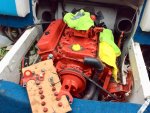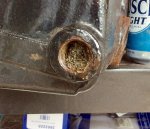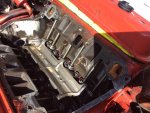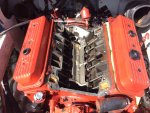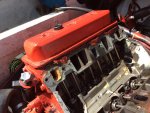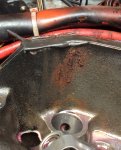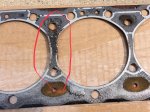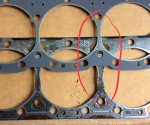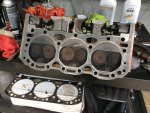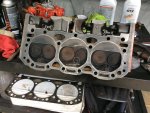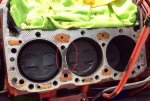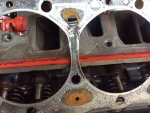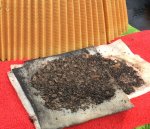For the exhaust manifolds I like to use a thin screwdriver although my new ones don't really clog....
for the intake, well I had the same problem...firstly, I'd clean out all the crud between the intake and the cyl heads and the front and rear parts of the manifold. Use some compressed air to blow out any debris, make sure that you have the hole for the distributor, and the carb mount covered up to keep out dirt.
The areas at the front and rear of the block are sealed with a type of silicone sealer. I'd get a sharp knife and dig some of this out, there will be a pretty decent sized gap there. Now some may disagree with my 'method' but what I did next was get a couple of wide blade screwdrivers and put electrical tape on the blades. Then slid them into the gap and pried it off. Using the tape will prevent the screwdriver from damaging the sealing surfaces. I tried other methods and this thing was not coming off easily. If you have the same experience as I did the cyl heads will come off much easier. If the bolts give you a rough time use an electric 1/2" impact gun.
Your next challenge will be getting that old sealer off the intake sealing surfaces...I used a razor scraper and a permatex gasket softener product...and patience...don't use rotary tools, they will make low areas that will cause sealing problems...
I like the Fel Pro marine head gaskets and intake gaskets, for the older engines they do sell them in a set...might be able to find it on Jegs or Summit racing....The head gaskets must be marine though.




















